10 unique animals you wont believe exist
eye candy animals
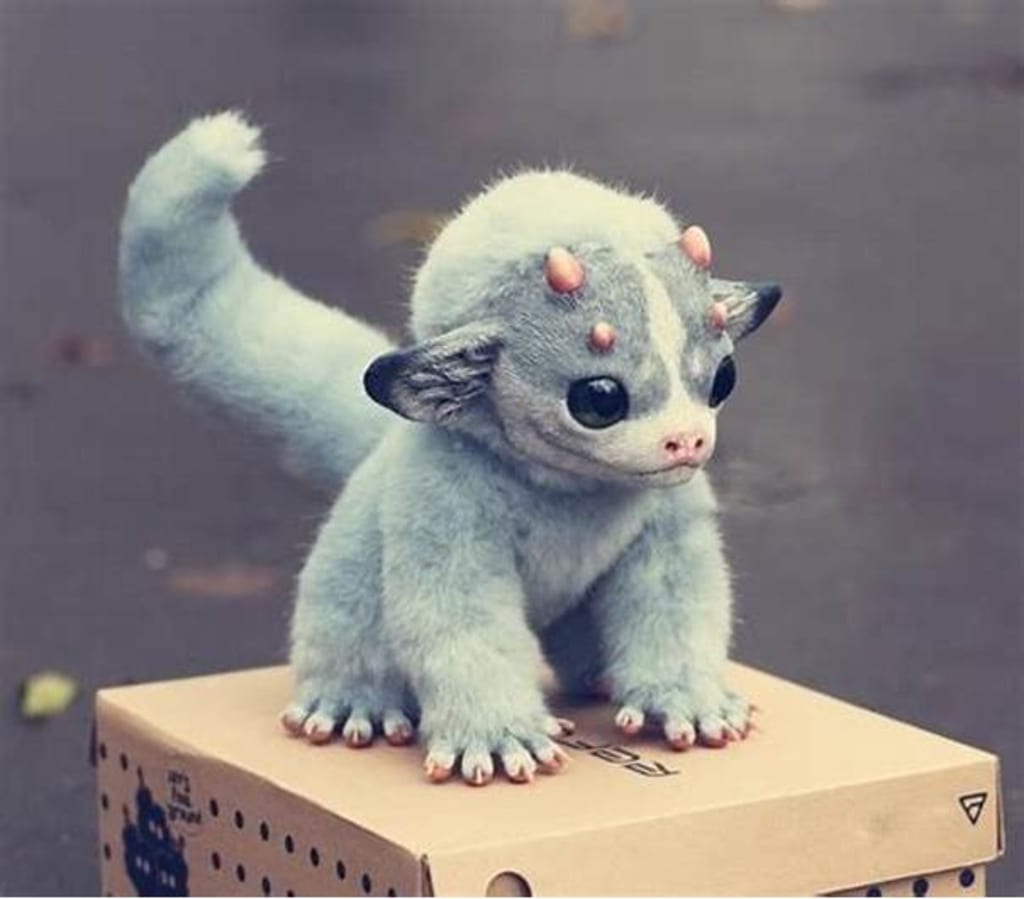
We live in the 25th centaury at all continents are already been discovered, all secrets of planets are revealed, and all mountain peaks are conquered but nature is truly full of surprises. just think what will you do if you see new animal with new appearance, instantly restoring your faith in the impossible.
In this article we going to see 10 strange animals that you have probably never heard of, let alone, ever met. and at the end, you will find a bonus that will blow your mind
1., Venezuelan poodle moth:

The Venezuelan poodle moth is a species of moth that is native to the forests of Venezuela. It was first described in 2009 by Dr. Arthur Anker of Bishkek, Kyrgyzstan. The species is named after its distinctive appearance, which resembles a poodle due to its fur-like scales and rounded head.
The Venezuelan poodle moth is a small moth, with a wingspan of approximately 1.5 to 2.5 cm. The body is covered in dense, white fur-like scales, which gives the moth a fuzzy appearance. The head and antennae are rounded and ball-like, and the wings are white with black and brown markings. The legs and thorax are also covered in white scales.
Very little is known about the biology and behavior of the Venezuelan poodle moth. It is believed that the species is nocturnal and feeds on the nectar of flowers. The larvae of the species are unknown, but it is speculated that they feed on plant material.
The Venezuelan poodle moth is not well-studied, and there is limited information available about its distribution and habitat. The species is only known to exist in the forests of Venezuela, and it is not known whether it occurs in any other parts of South America.
Despite its distinctive appearance, the Venezuelan poodle moth is a relatively unknown species and is not well-known outside of scientific circles. Its discovery has sparked interest among lepidopterists and naturalists, and further research is needed to learn more about this intriguing species.
In conclusion, the Venezuelan poodle moth is a unique and little-known species of moth that is known for its distinctive appearance, resembling a poodle. With its fuzzy white scales and rounded head, it is a fascinating and mysterious creature that has captured the attention of scientists and naturalists alike.
2., Malayan colugo:
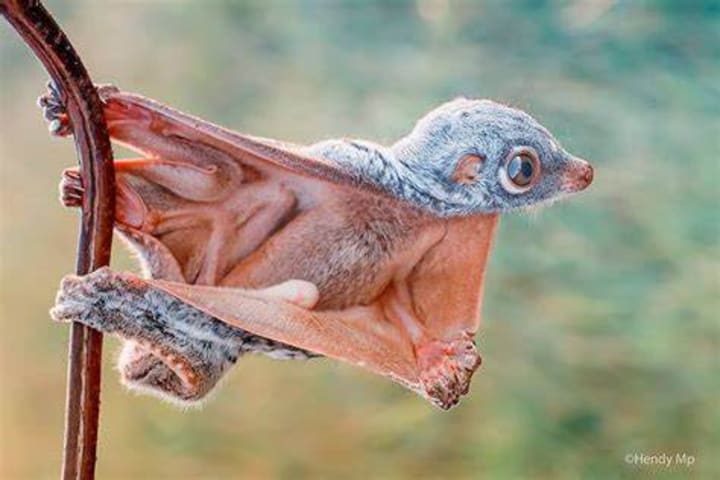
The Malayan colugo, also known as the Sunda colugo or the flying lemur, is a species of arboreal mammal found in Southeast Asia. They are not true lemurs, but are instead part of a separate group of mammals known as gliders. Colugos are so-called because of their ability to glide through the air for long distances, using a flap of skin that extends from the neck to the ankles, known as a "patagium."
The Malayan colugo is a medium-sized mammal, with a body length of approximately 40-50 cm and a weight of 1-2 kg. They have a fur-covered body, with a dense, soft, grayish-brown coat that provides insulation and helps them blend into their environment. They have large, round eyes and a long, furry tail.
These mammals are arboreal, spending most of their time in the trees. They are nocturnal and feed primarily on leaves, but may also consume flowers, fruit, and insects. Colugos are excellent gliders and can travel up to 50 meters in a single glide. They use their patagium to control their descent and navigate through the forest canopy.
The Malayan colugo is found in several countries in Southeast Asia, including Malaysia, Thailand, and the Philippines. They live in a variety of habitats, including primary and secondary forests, as well as mangroves and coastal forests.
Despite their ability to glide, the Malayan colugo is not a common species and is considered to be threatened due to habitat loss and degradation. Deforestation and the expansion of agriculture and human settlements have reduced the availability of suitable habitat for these animals. Conservation efforts are underway to protect remaining forests and to promote sustainable land-use practices that will help ensure the survival of this species and other wildlife in Southeast Asia.
In conclusion, the Malayan colugo is a fascinating and unique species of mammal that is well adapted for life in the trees. With its ability to glide long distances, it is an important part of the forest ecosystem and a valuable indicator of the health of Southeast Asian forests.
3., Mangalitsapig:

Mangalitsa pig is a breed of domestic pig that originates from Hungary. It is also known as the "Wool Pig" due to its distinctive, curly, and woolly coat. The breed was developed in the 19th century as a lard pig, a type of pig that was raised specifically for its high-quality lard.
The Mangalitsa pig has a unique, fat-covered body and a thick coat that protects it from the cold. This makes it well-suited for life in the colder regions of Europe, where it was originally raised. The breed has a distinctive, friendly disposition and is known for its intelligence and sociability.
The Mangalitsa pig is considered a rare breed and is highly prized for its meat, which is considered to be some of the finest and most flavorful pork in the world. The meat has a high level of marbling, giving it a rich and succulent flavor. It is also lower in cholesterol and higher in healthy monounsaturated and polyunsaturated fats than other breeds of pigs.
The Mangalitsa pig is often used in high-end restaurants and is a popular choice for cured meats, such as prosciutto and jamón ibérico. The breed is also well-suited for traditional Hungarian dishes, such as goulash and stuffed peppers.
In recent years, the Mangalitsa pig has gained popularity in other parts of the world, including the United States and Europe, where it is now raised for its meat and as a specialty breed. Despite its popularity, the breed remains relatively rare and is considered a luxury product.
In conclusion, the Mangalitsa pig is a unique and fascinating breed that is highly valued for its meat and distinctive appearance. Its rich and flavorful meat, combined with its rarity, make it a sought-after ingredient for high-end cuisine.
4., Rhinopithecus:

Rhinopithecus is a genus of Old World monkeys in the family of Rhinopithecidae, commonly known as snub-nosed monkeys. They are native to Southeast Asia, specifically in the mountainous regions of China, Myanmar, and Vietnam.
Rhinopithecus species are known for their distinctive, upturned noses and unique, expressive faces. They have long, shaggy fur that can range in color from black to light brown, and they have long arms and legs that allow them to easily move through the trees.
There are several species of Rhinopithecus, including the Golden Snub-nosed Monkey (Rhinopithecus roxellana), the Black Snub-nosed Monkey (Rhinopithecus bieti), and the Gray Snub-nosed Monkey (Rhinopithecus brelichi). These species are known for their highly social behavior, living in large groups of up to several hundred individuals.
Rhinopithecus monkeys are herbivorous, primarily feeding on leaves, stems, and seeds. They are also known to eat fruit and flowers when they are available. These monkeys are arboreal, meaning they live in trees, and they are active during the day.
Unfortunately, many species of Rhinopithecus are endangered due to habitat loss and hunting. Deforestation and the conversion of forested land for agriculture and other human activities have greatly reduced the range and population size of these monkeys. Conservation efforts are underway to protect remaining populations and their habitats, but much more needs to be done to ensure the survival of these unique and fascinating primates.
In conclusion, Rhinopithecus is a genus of Old World monkeys known for their distinctive, upturned noses and expressive faces. They are highly social and live in large groups in the mountainous regions of Southeast Asia. Many species of Rhinopithecus are endangered due to habitat loss and hunting, and conservation efforts are needed to protect them and their habitats.
5., Emeror Tamarin:
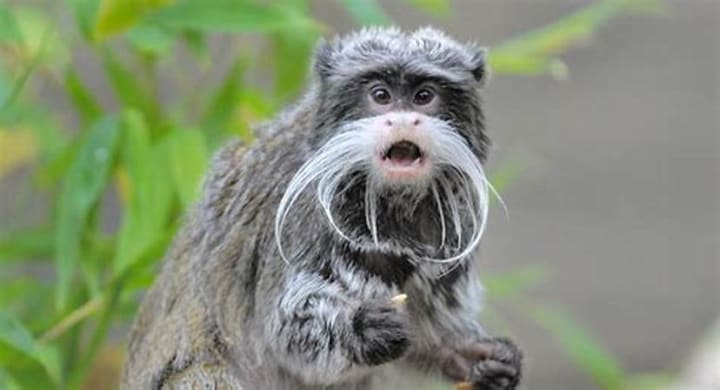
The Emperor Tamarin, scientifically known as Saguinus imperator, is a species of tamarin monkey found in the South American rainforests of Bolivia, Brazil, and Peru. It is named after the German emperor Wilhelm II, due to its distinctive, mustache-like whiskers, which resemble the emperor's famous facial hair.
The Emperor Tamarin is a small, agile monkey with a long, slender body and a tail that is longer than its body. Its fur is typically gray with a black mantle and white markings on its cheeks, chin, and neck. Its most notable feature is its long, upward-curving whiskers, which can grow up to four inches in length.
Emperor Tamarins are social animals and live in groups of up to 15 individuals. They are primarily arboreal, spending most of their time in the trees, but they will also descend to the ground in search of food. Their diet consists of fruits, insects, and nectar, and they have a special adaptation in their long snouts, which allows them to extract nectar from flowers.
One interesting behavior of the Emperor Tamarin is that they are known to practice "tolerant cannibalism." This means that if a female is unable to feed her young, another female in the group will often step in to nurse the infants. This behavior helps ensure the survival of the species and is a unique characteristic among primates.
Despite its unique and charming appearance, the Emperor Tamarin is considered vulnerable to extinction due to habitat destruction and fragmentation. The South American rainforests where it lives are being destroyed for agricultural and development purposes, which is reducing the size and quality of its habitat. Conservation efforts, including the creation of protected areas and reforestation initiatives, are underway to protect this species and its habitat.
In conclusion, the Emperor Tamarin is a fascinating species of tamarin monkey known for its mustache-like whiskers and unique behavior. It is an important part of the South American rainforest ecosystem and is in need of protection to ensure its survival. Its story highlights the importance of conserving biodiversity and the delicate balance of life in the world's ecosystems.
6., Pentagonian mara:
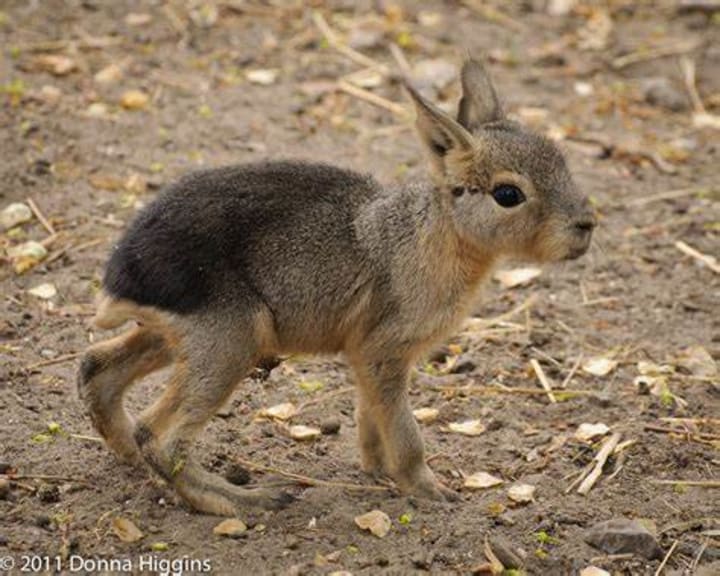
The Patagonian Mara, also known as the Patagonian cavy, is a large rodent native to the grasslands and steppes of South America. It is found in Argentina and Chile, and is one of the largest rodents in the world, with a body length of up to 70 cm and a weight of up to 14 kg.
The Patagonian Mara has a distinctive appearance, with a long, cylindrical body and short legs. Its fur is brownish-gray in color, with a lighter underside, and it has long, rabbit-like ears and a short, bushy tail. Unlike most rodents, which have sharp incisors, the Patagonian Mara has a unique dental structure, with strong molars used for grinding tough vegetation.
These animals are herbivores, feeding on grasses, leaves, and stems. They are active during the day and are social animals, often found in pairs or small family groups. During the breeding season, male Patagonian Maras will compete for mates by displaying and challenging one another with aggressive behavior.
One interesting aspect of Patagonian Mara behavior is their parenting style. The female will give birth to litters of two or three young, and both parents will take care of the offspring, with the male often participating in feeding and grooming the young. This parental care is unusual for rodents and helps ensure the survival of the species.
Despite its large size and tough adaptations, the Patagonian Mara is facing several threats, including habitat destruction, hunting for meat and fur, and competition from introduced species. In some areas, the expansion of agriculture and urbanization has reduced the size and quality of their grassland habitats, while in others, they are hunted for their meat and fur, which is considered a delicacy in some cultures. Conservation efforts, including habitat protection and hunting regulations, are needed to ensure the survival of this unique and important species.
In conclusion, the Patagonian Mara is a large and distinctive rodent native to the grasslands of South America. It is a social animal with a unique dental structure and a fascinating parenting style. Despite its tough adaptations, it is facing several threats, including habitat destruction and hunting, and conservation efforts are needed to ensure its survival. The story of the Patagonian Mara highlights the importance of protecting our planet's biodiversity and the delicate balance of life in the world's ecosystems.
7., Fluffy cow:

Fluffy cows are otherwise known as Rustic cattle are a group of cattle breeds that are known for their hardiness and adaptability to harsh environmental conditions. They are often found in remote areas and are used for a variety of purposes, including dairy production, meat production, and as draft animals.
Rustic cattle are typically smaller in size compared to modern dairy and beef breeds. They have strong and sturdy bodies, which make them well-suited for work in rugged terrain. They are also known for their endurance and ability to survive in harsh conditions with limited food and water.
The color of rustic cattle can vary, but many breeds are red, brown, or black. They have distinctive horns, which are usually long and spiraled. Rustic cattle are also known for their long, shaggy coats, which protect them from the elements and help them regulate their body temperature.
Rustic cattle are often raised in traditional farming systems, where they are managed as part of a mixed farm enterprise. They are used for a variety of purposes, including providing dairy products, meat, and as draft animals. In many cases, they are also used for cultural and religious purposes.
Rustic cattle are well-adapted to their environment, and they play a vital role in maintaining the diversity of local breeds and supporting traditional farming systems. However, many rustic cattle breeds are facing challenges due to modernization and the introduction of more intensive production systems. Conservation efforts are underway to protect these breeds and promote their sustainable use.
In conclusion, rustic cattle are a group of hardy and adaptable cattle breeds that are well-suited to life in harsh and remote environments. With their strong and sturdy bodies, they play an important role in traditional farming systems and are valued for their versatility and cultural significance. Conservation efforts are needed to protect these breeds and ensure their survival for future generations.
8., Markhor goat:
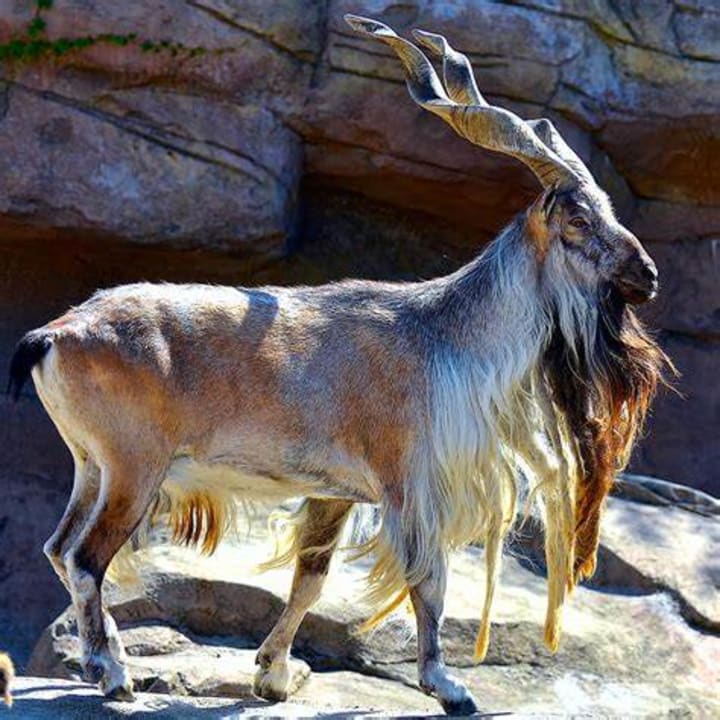
The Markhor (Capra falconeri) is a species of wild goat found in the mountains of Central Asia. They are native to Afghanistan, India, Pakistan, and Tajikistan, and are known for their distinctive, spiral horns that can grow up to 5 feet in length.
Markhor are highly adapted to their mountainous habitat and are known for their agility and sure-footedness. They are able to navigate steep, rocky terrain with ease, and are able to jump up to six feet in the air. They have a shaggy, long-haired coat that can range in color from light brown to black, and a bushy tail.
The Markhor is considered a national symbol in Pakistan, where it is featured on the country's currency and is also the national animal. Despite their protected status, Markhor populations have declined in recent decades due to habitat loss and hunting.
In an effort to conserve this species, several Markhor conservation programs have been established in the countries where they are found. These programs involve working with local communities to educate them about the importance of conservation, as well as the implementation of protective measures such as setting up wildlife reserves and stricter hunting regulations.
Markhor are also hunted for their meat, hides, and horns, which are considered to have medicinal properties. The horns are also sought after by collectors, making them a target for illegal hunting. To combat this, several countries have implemented trade restrictions and have increased enforcement efforts to prevent the illegal trade of Markhor horns.
Despite these challenges, the Markhor population has slowly started to recover, and the species is considered to be in a better state than it was in the past. Conservation efforts, coupled with the natural resilience of this magnificent species, offer hope for its future survival.
9., Racoon dog:

The Raccoon Dog (Nyctereutes procyonoides), also known as the Tanuki, is a species of canid native to East Asia. Despite its name, it is not closely related to either raccoons or dogs, but is instead a unique species in its own right.
Raccoon Dogs have a distinctive appearance, with a dense and soft fur that is yellowish-brown in color with black markings around their eyes, giving them a similar appearance to raccoons. They have short legs, small ears, and a long, bushy tail.
In their natural habitat, Raccoon Dogs are found in a variety of environments, including forests, grasslands, and wetlands. They are opportunistic feeders and will eat a variety of food, including small mammals, birds, insects, and fruit.
Raccoon Dogs are known for their excellent swimming abilities, and are often seen in the water. They are also good climbers, and will use their sharp claws to climb trees in search of food or to escape from predators.
In recent years, Raccoon Dogs have been introduced to Europe as a result of the fur trade, and have since established populations in several countries, including Finland, Sweden, and Germany. In some areas, they are considered an invasive species, as they can outcompete native animals for resources and disrupt local ecosystems.
Due to their unique appearance and adaptability, Raccoon Dogs have also been used in the pet trade. However, it is important to note that they can be challenging to care for, and they are not suitable pets for everyone. Before acquiring a Raccoon Dog, it is important to research their specific care requirements and to make sure that you are able to provide them with the necessary space, attention, and care.
Overall, the Raccoon Dog is a fascinating species that is well adapted to its environment and plays an important role in its ecosystem. Conservation efforts are needed to ensure the survival of this species in its native range, and to address the challenges posed by their introduction to new areas.
10., Blue footed bobby:

The blue-footed booby (Sula nebouxii) is a seabird species that is native to the eastern Pacific Ocean. They are part of the booby family (Sulidae) and are known for their distinctive bright blue feet. The blue coloration is a result of the high concentration of blue pigments in the skin and is used by males to attract mates during breeding season.
Blue-footed boobies have a distinctive appearance, with a white body, dark brown wings, and a long, hooked beak. They have a wingspan of approximately 5 feet and can weigh anywhere from 2 to 4 pounds. They are agile fliers and can dive from great heights into the ocean to catch fish.
These birds breed on rocky islands along the Pacific coast of Central and South America, from Baja California in Mexico to Peru. They are colonial nesters and can form large colonies with thousands of birds. During breeding season, males perform a dance to attract mates and show off their blue feet. After mating, the female will lay one or two eggs and both parents will take turns incubating the eggs and feeding the chicks.
Blue-footed boobies are opportunistic feeders and feed on a variety of fish and squid. They are able to dive from great heights, reaching speeds of up to 60 mph, and can dive to depths of over 200 feet in search of food.
Blue-footed boobies are not considered threatened or endangered, however, their populations have declined in some areas due to habitat loss and over-fishing. Conservation efforts have been put in place to protect their breeding sites and improve the health of their populations.
In conclusion, the blue-footed booby is a unique and fascinating seabird species that is well-known for its bright blue feet and acrobatic diving abilities. With its distinctive appearance and playful courtship dance, it is a favorite among bird-watchers and wildlife enthusiasts.
Comment your favorite,
About the Creator
Enjoyed the story? Support the Creator.
Subscribe for free to receive all their stories in your feed. You could also pledge your support or give them a one-off tip, letting them know you appreciate their work.






Comments
There are no comments for this story
Be the first to respond and start the conversation.